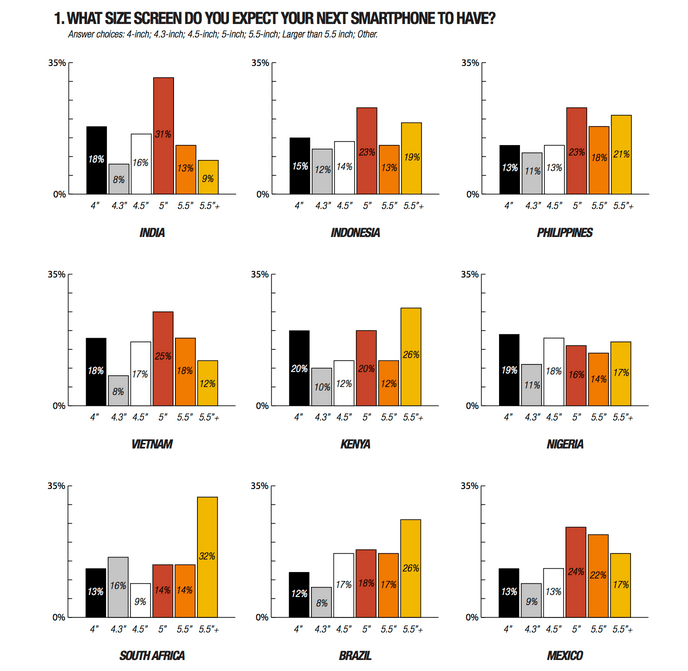Mini tablets exploded at a time when 3.5-inch iPhones and 9.7-inch iPads were what’s most popular. There was a big gap between these two sizes: the iPhone was highly portable, but the screen meant bite-sized consumption; iPads were better for Internet browsing and games, but it was too large to easily carry around. Mini tablets fulfilled a market gap — a computing device small enough to hold with one hand that offered a better reading experience than phones could provide.
However, the world today is different. The 4-inch iPhone 5S is practically the smallest smartphone on the market, 5-inch phones are average and 5.5-inch phones are not uncommon. The trend to bigger screen sizes is apparent in the chart below:

Even Apple is catching up with the times and will introduce a 4.7-inch and 5.5-inch sized iPhone 6.
According to market research company Jana, the trend towards bigger phones will continue, at least for developing countries:

I switched from the iPhone 5S to a 5.5-inch OnePlus One, and the difference in viewing real estate is dramatic. Consuming on the iPhone looks comically small by comparison. Everything looks better on a bigger screen: emails, Internet, books, and most especially videos and games.
With the OnePlus One, the need to reach for my 7.9-inch iPad mini is less than before. And when I want a bigger screen than my smartphone can provide, instead of the iPad mini I prefer the Surface 2.
The gain from phablet to mini tablet is just too incremental. It’s substantially worse too because I can’t put a mini tablet in my pocket. If I’m going to need a bag to carry a device, I might as well bring my Surface 2. Its 10.5-inch screen enables new functionality that my smartphone and mini tablet cannot meaningfully provide, like displaying two apps side-by-side. (The keyboard cover also allows me to do work.)
The combination of a 5.5-inch and a 10.5-inch device beats a 7.9-inch device in every single usage category except one: eBooks. This is the one use case that a mini tablet is superior in, because when you read an eBook the device needs to be light enough to be held in one hand and large enough to be read comfortably. But even for that, the 5.5-inch device is good enough.
For everything else, the portability of smartphones and the usability of large tablets win out. The mini tablet is a classic tweener device: not small enough for the pocket, not large enough for productivity tasks.
So where does that leave mini tablets? I believe the future of this device class is limited. People who think mini tablets are important tend to still be using 4-inch smartphones — to them, a 7-inch device fills a need; but for everyone else used to large phones, there is no need for a mini tablet.
With the rise of phablets, I don’t see myself ever buying a 7- to 9-inch tablet again.